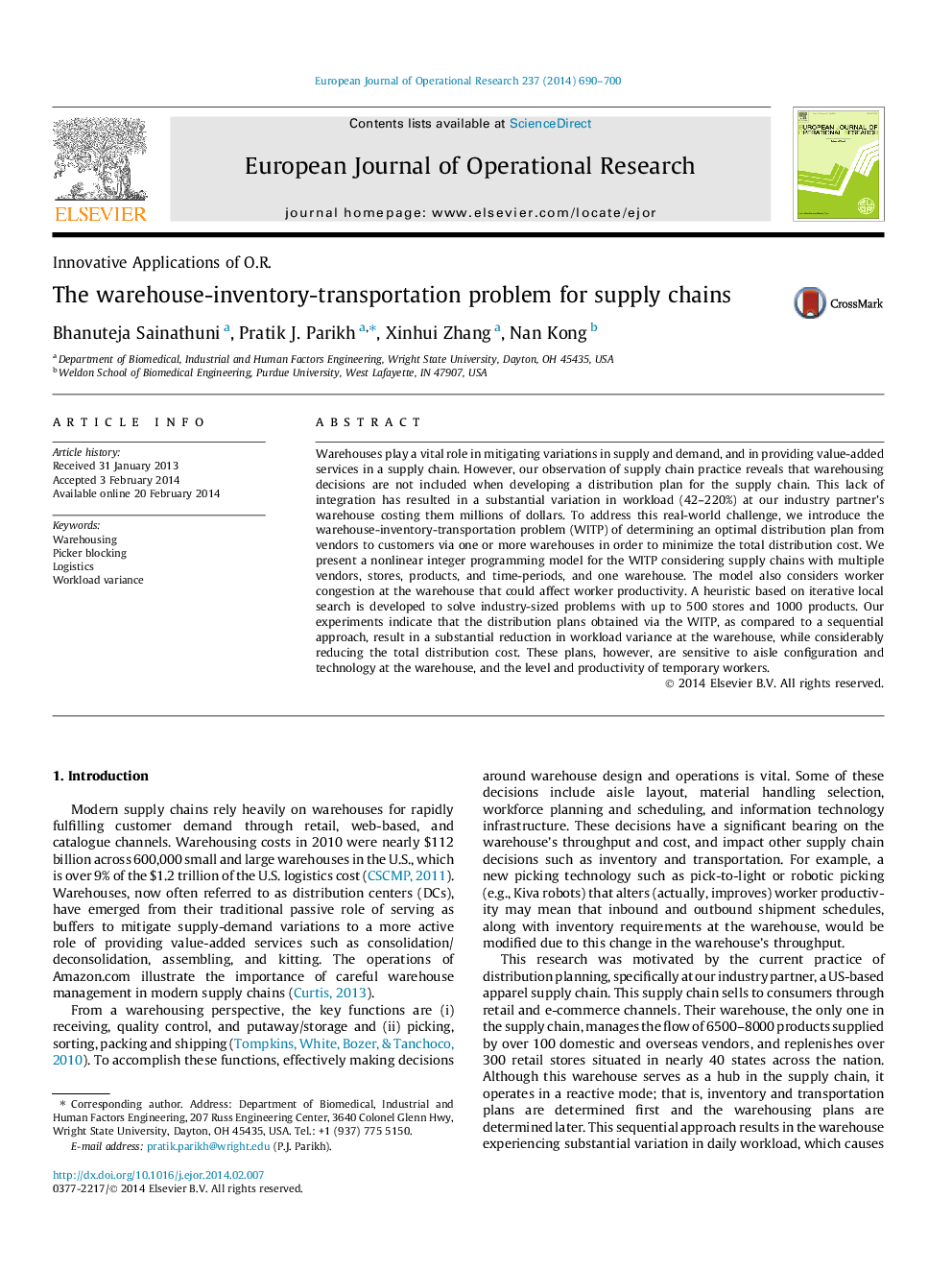| Article ID | Journal | Published Year | Pages | File Type |
|---|---|---|---|---|
| 478154 | European Journal of Operational Research | 2014 | 11 Pages |
•We integrate warehousing decisions with inventory and transportation.•A mathematical model is developed and solved using a metaheuristic.•Worker congestion at the warehouse is considered.•Substantial cost savings and reduction in daily workload variance can be achieved.
Warehouses play a vital role in mitigating variations in supply and demand, and in providing value-added services in a supply chain. However, our observation of supply chain practice reveals that warehousing decisions are not included when developing a distribution plan for the supply chain. This lack of integration has resulted in a substantial variation in workload (42–220%) at our industry partner’s warehouse costing them millions of dollars. To address this real-world challenge, we introduce the warehouse-inventory-transportation problem (WITP) of determining an optimal distribution plan from vendors to customers via one or more warehouses in order to minimize the total distribution cost. We present a nonlinear integer programming model for the WITP considering supply chains with multiple vendors, stores, products, and time-periods, and one warehouse. The model also considers worker congestion at the warehouse that could affect worker productivity. A heuristic based on iterative local search is developed to solve industry-sized problems with up to 500 stores and 1000 products. Our experiments indicate that the distribution plans obtained via the WITP, as compared to a sequential approach, result in a substantial reduction in workload variance at the warehouse, while considerably reducing the total distribution cost. These plans, however, are sensitive to aisle configuration and technology at the warehouse, and the level and productivity of temporary workers.
